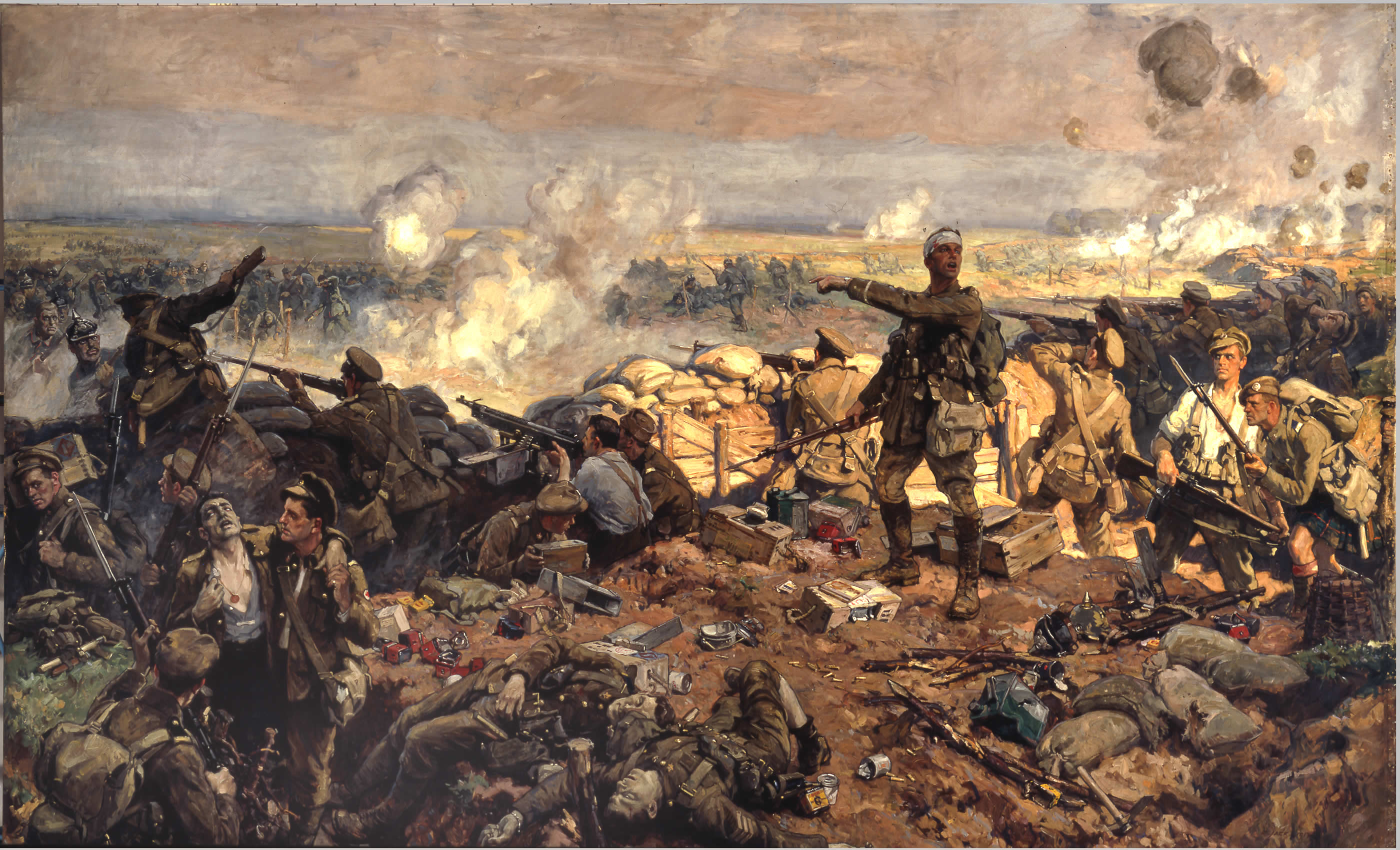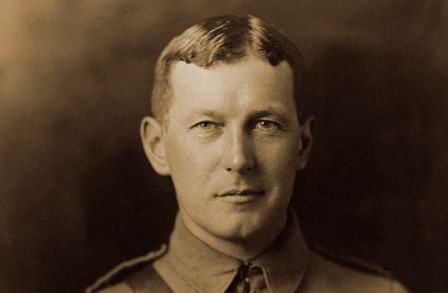
WW1: Canada’s Defining Year’s
Since the beginning of March, much of my time both in school and out, has been taken up by the very fascinating unit all about WW1. I will just start off by saying that I loved this unit, and thoroughly enjoyed the learning and assignments that came with it. I started this unit knowing fairly little about WW1, I knew more about WW2, as I am really interested in the Wars, and the technological nature of the Second World War seemed a little more appealing. Anyways, that’s beside the point. By now I could tell you so much about the war, the exact date Germany released poison gas for the first time, to the percentage of the Royal Newfoundland Regiment that were killed within 30 minutes at the Somme. Needless to say, this unit has taught me a lot, not just about the gory details of the war though, but also about the importance of Canada’s role in the war, and most importantly, the idea of Canadian identity.

Our first task of this unit was to choose one of three books; War Horse, Generals Die In Bed, or Private Peaceful. After a quick background check on my options, I chose Generals Die In Bed, as I read that it was a very detailed, diary-like depiction of life in the trenches, something I would be interested in more than the story of a horse…

The task was fairly simple, we just had to be finished our novels by the end of Spring Break. As I went on holiday for majority of the break, I had over 20 hours of flight time for this book to keep me busy with. By the time the first day back rolled around, I was completely finished my book and was ready to share my thoughts with my classmates. As we discussed the novel with each other, it was interesting to see what other people took away from it.

The second part of our book assignment, was to create a book report. However, these book reports weren’t your average write ups. We were given a lot of freedom in the sense that we could display our understanding of the book in just about any way from choosing a few songs that you feel connect with the book, to painting a depiction of the books message. After running through various options, I settled on creating a collage of original photos that would be meaningful to the main character of the book; Charles Yale Harrison.

I have taken a lot of photos relating to WW1, so I decided making this collage using original photos would be a great way of putting these photos to good use. As Generals Die In Bed is a very personal novel that is basically made up of gritty, thought-provoking log-entries, I figured that a lot of photos would theoretically resonate with Charles Yale Harrison in the sense that if he could only see how the immense sacrifice of the Great was is recognized today. Anyways, if you would like to learn a little more about this collage of mine, the actual document I handed in is below.



About a week before the creative book report was due, our class embarked on our trip to Ottawa. It was on this week-long Trip where I learned, first hand, so much about WW1, and what it meant to be Canadian at the time. From gaining private access in to war museums, to speaking to veterans of all different ages and backgrounds, I was extremely fortunate to be given this once in a lifetime opportunity. I’m so glad that I was already interested in the topic of war, because it really made it easy to become so engrossed in the trip itself, which helped yield better, more authentic results when it came to my book. Speaking of book, I suggest you flick through my Ottawa book below, and if you would like to learn even more about my time in our nations capital, you can visit my Ottawa Blog Post.
The main assignment of this unit was to create a few comic pages about something in WW1, person, event, weapon, etc. After everyone completed their pages, we would put it all in to one big book with short comics of different things about WW1. We were allowed to choose what we topic we wanted, and I chose the Second Battle Of Ypres. I chose this battle because I knew this was a battle where gas was used and I was intrigued by the use of poison gas in the war after briefly learning about it in Ottawa, and I wanted to know more. After completing an extensive research document over about a couple weeks, I was approved by Ms. Maxwell to begin work on my Comic.

Comics have always been something I enjoy making, they don’t feel like homework to me. I think it’s because I have a bit of a passion for graphic design, and also because my mild OCD forces me to make sure things look nice and aligned! With this being said, I was looking forward to making a comic, as the one I had last done was a while ago. I used a little creative thinking to make my comic stronger. Because there aren’t a ton of quality WW1 photos, especially not a ton relating to specific battles, I had to come up with a way to gather images I could use in my comic. So for instance, instead of searching “Second Battle Of Ypres Gas Attack”, I would search up “World War 1 Gas”. That way, my limits were expanded and when I found a photo that fit, even if it wasn’t a photo actually from the Second Battle Of Ypres, it didn’t matter. Because who’s gonna be able to tell, it’s just a photo of random soldiers and some gas.

It didn’t take me long to figure out a theme and put together my comic, as I had already envisioned what I wanted it to look like. I used my experience of editing photos to create, at least what I thought to be, an aesthetically pleasing few pages of content. As well as creating a comic, we also had to include a page devoted to the story of a specific person related to our comic, who played an important role in the war. I was surprised to learn that Lieutenant Colonel John McCrae fought in the 2nd Battle Of Ypres, so I chose him. I did a bunch of research in to McCrae’s life, mainly sighting his biographies. I put together a relatively condensed version of his biography, as well as of course including his world-famous war poem “In Flanders Fields”.

It didn’t take me many drafts to achieve my final product. I believe this was due to the fact that I had a plan, and had done authentic research prior to creating the actual comic itself. I would definitely say that I am proud of the work I completed, and I believe I put in a lot of effort to achieve these results.
The very last part of this unit was about a graphic novel known as “Shattered Ground”. It is the tale of 4 men who enlist in the army, convinced that the next part of their lives will be an exciting adventure. Though they are quick to learn that the war is no fairytale, but a miserable place of slaughter. The book is told through the perspective of the main characters great grandson, who is reading his diaries after finding them in the attic.

I found this novel a good way to wrap up the unit and to recap just about the entire timeline of the war, through a soldiers perspective. The idea of Canadian identity rang true throughout the novel, reminding us of Canada’s sacrificial role in the “war to end all wars”. We are taught of how the worlds perception of Canada shifts over the course of the war, where as a nation we prove ourselves to be a serious threat. This novel, along with the reflection questions we completed to go along with it, was a great way to cap off this unit.

All in all, the past few months have taught me what it meant to be Canadian not only in World War 1, but today. We will always be the underdog country with a lot of heart and courage, willing to do whatever it takes to not only support the ones who support us, but the ones who need our support. World War 1 was the first time Canadians got to show their patriotism on the world stage, and our legacy has been continued through generations, and shows no signs of stopping anytime soon.